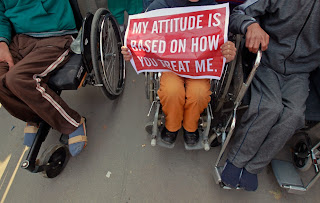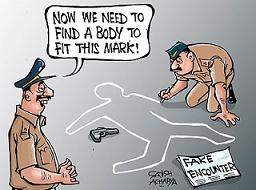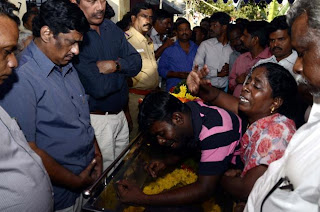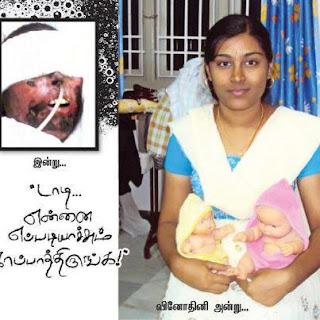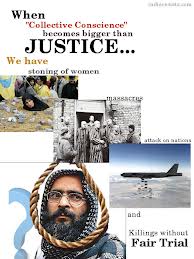Licence to kill?
The widespread lack of accountability of the security forces either the police or the military continues the culture of violations and denial of rights. Members of the police or military accused of violations have remained free to commit further violations. Even when complaints are made, the government and its institutions have either exonerated or defended their men without conducting credible investigations. The cycle of violence and impunity is reinforced by excessive delays in the adjudication of cases against security forces. Even in cases involving the gross abuses of extrajudicial killings, enforced disappearance and torture, where the perpetrators have been identified and charged in court, the trials do not result in punishment as they do not progress. This is due to a lack of witnesses and evidence, a direct result of the police and prosecutors failure to effectively perform their duties.
The police have no authority to decide that a person's death or the manner he was killed was legitimate or not? The security forces have fundamental obligations to ensure protection of right to life. Deprivation of this right to life perpetrated by security forces is so grave and the government should take measure to prevent arbitrary killing by their own security forces. Concluding and deciding prematurely that the victim's death does not merit further investigation constitutes an excess of the police duty and usurping of the court's judicial power.
In a democracy, people should be treated equally before the law and they must have the same protection of the law, regardless of whether they are criminals, state officials or ordinary citizens. The singling out of any group as unworthy of legal protection is morally and legally illogical. Unfortunately, the notion of equality before the law is not often found in Indian criminal Justice system. While the Indian criminal justice system is meant to impartially hold persons guilty of crimes accountable for their actions, in reality it operates with a lot of prejudice. The government has failed to take effective measures to prevent its officers from the continuing practice of labeling persons and groups as being criminals, terrorists, which is often a precursor to these individuals or groups being the subject of attacks. The deprivation of life by the authorities of the State is a matter of utmost gravity. State should establish effective facilities and procedures to investigate thoroughly cases of biased police actions. The fundamental duty of the police is to effectively and with utmost credibility conduct investigation to any serious allegations involving policemen in killings and rights abuses. It is for the court to decide whether those involved should be held to account or not; or whether the killing is within the lawful premise.
For your reading the Article in
the Hindu by Teesta Setalvad(20-02-2013)
Shamelessly shooting to kill
In the recent incidents at Dhule and Thangadh, the communal bias of the police was caught on camera and is there for anyone who cares to see
Images of the Delhi police lobbing tear gas shells at and using water canons on protesters at India Gate on a Sunday, December 23, 2012, who were agitating against the gang rape of a young girl are embedded in the nation’s psyche, courtesy of our omnipresent, 24x7 news networks, images sharpened further by the ever-prescient discussions on the 9 p.m. Newshour.
Not 14 days later, also on a Sunday, about a thousand kilometres away, in faraway north Maharashtra, the town of Dhule saw a distinctly more brutal police action; the rapid firing of SLR bullets to kill six young Muslims. It was a case of being caught at the wrong place at the wrong time.
They paid heavily with their young lives. In a similarly brutal and uncalled for police action at Thangadh in Surendranagar district, not far from Ahmedabad, four Gujarat officers using AK-47s had shot dead three Dalits, including a 17-year-old, on the night of September 22-23, 2012.
The tragedies, at Thangadh and Dhule, that had cost these precious lives, were however reduced to media sideshows, though the print editions of English language national dailies did spotlight some issues. The police, in Dhule, were caught on mobile phone videos in shameful acts. Yet, despite the availability of such sensationally thrilling clips, the normally avaricious and greedy eye of the television camera looked away. The shots slipped into late afternoon or midnight bulletins, cleverly bypassing the noisy news hour.
One of the Dhule clips shows a constable taking a self-loading rifle from his senior officer and aiming to shoot high above the waist. Bullet marks have been found in the market place and gullies of Macchipura a kilometre deep into the Muslim area, away from any groups that had gathered. Three such shots fired in quick succession got Imran Ali in his collarbone, eventually leading to his death. Of the 23 other young Muslim men who were critical, one had a bullet fired into his cheek, narrowly missing his eye, another rupturing a liver. Another clip shows a policeman ignoring calls for protection. Yet another shows policemen in uniform looting Muslim establishments that were being destroyed and burnt by some rioters.
In Thangadh, the four policemen later absconded.
Stephen Lawrence case
The murder, in 1993, of a black youth Stephen Lawrence, in the United Kingdom, and the publication, in 1999, of the Stephen Lawrence Inquiry report led to the critical acknowledgement that hate crimes are committed even by men in uniform and that such deeds demand institutional sensitisation and correction. What emerged was a Hate Crimes Manual that warned what constituted such practice.
Since the late 1980s, when evidence of deviant conduct by men in uniform surfaced from several bouts of targeted violence countrywide (Nellie, Assam, 1983 — 3,000 Muslims massacred; Delhi, 1984 — over 3,000 Sikhs systematically killed; Hashimpura, Uttar Pradesh, 1987 — 51 Muslims shot dead by the Provincial Armed Constabulary (PAC); Bhagalpur, Bihar, 1989 — a massacre that left thousands dead and evidence buried below a hastily planted cauliflower field; Mumbai, 1992-1993 — over 1,200 dead; Kandhamal, Odisha, 2008 — nearly 100 Christians and Gujarat, 2002 — over 2,000 Muslims massacred), courts and judicial commissions have strongly indicted India’s police for harbouring a distinct anti-minority bias, committing crimes through a manifestation of this hatred and not being punished for it.
Studying police neutrality
In 1995, I had interviewed a senior IPS officer, V.N. Rai, who taken a year’s sabbatical to complete a research study, “Combating communal conflicts: Perception of police neutrality during Hindu-Muslim riots in India.” This interview was published in over 30 Indian publications. Among other things, Rai’s interviews with hundreds of riot victims from across the country (as part of his study) produced the startling finding that in all riot situations, Hindus consider policemen as their friends while, almost without exception, the minorities — Muslims and Sikhs — experience them as their enemy. This piece of work ought to have initiated the kind of self-reflection that the Stephen Lawrence murder had led the British police to. Instead, Rai’s study was ignored by the Indian police establishment. He had to find a private publisher to publish it as a book. What it did do however was lead to the issue being flagged by senior stalwarts. The founder and former chief of the Border Security Force (BSF), K.F. Rustomjee, and DIG Padma Rosha were quick to lend their voice to this issue of crucial concern, stressing that unless the Indian police confronted the issue of deep, communal (and caste) bias, they were sowing the seeds of bitter alienation. If Rai had conducted this study today, perceptions among the minorities would reflect alienation several degrees worse.
My interview covered several sensitive areas. I asked Rai specifically about the police’s criminal dereliction of duty on December 6, 1992, when the Babri Masjid was demolished as 3,000-4,000 men in uniform watched. His reply was a chilling recall of another fateful Sunday 21 years ago: “The video cassette recording by the Intelligence Bureau clearly documents that not more than 3,000-4,000 ‘kar sevaks’ were within close proximity of the mosque. In such a scenario, could no effective action have been taken? The reason why no action was taken lies elsewhere. The same cassette shows policemen rejoicing, with their hands held high in victory, when the Babri Masjid was destroyed. The district magistrate and other officials were dancing with delight. That is why the ‘kar sevaks’ could not be stopped. There was no desire to do so.” None of these offenders were punished.
Pitching strongly for the application of the principle of command responsibility when large-scale violence results following the failure to prevent or contain communal violence, Rai narrated the quotation “There are no bad soldiers, only bad generals.” So, leadership not only makes a substantial difference, it is the most vital, the most decisive factor in the functioning of a force whether we are talking of the police, the paramilitary or the army.
An officer to the rescue
Two decades after much soul-searching — that followed the cataclysmic events before and after the demolition of a 400-year-old mosque at Ayodhya — we are still only debating (and the establishment resisting) the chain of command responsibility being applied to men in uniform when it comes to serious offences, including sexual violence. Worse, there is a shrill resistance to enact legislative protection against the systematic outbreak of communal and targeted violence through a law that will penalise policemen who fail to preserve the peace.
Rai, in 1987, was the man who filed the First Information Report of the crimes committed by the PAC at Hashimpura. Fifteen years later, in 2002, in Gujarat’s Bhavnagar district, it was SP Rahul Sharma who charged ahead, firing to disperse a murderous Hindu mob when his men refused to act to prevent them attacking a madrassa. His prompt action saved the lives of 400 Muslim children. Today, he is at the receiving end of blows from a vindictive State government, facing every day harassment, charge sheets and worse.
Rai or Sharma are unlikely heroes for Republic Day bravery medals nor are they the likely face or voice of discussions on television channels. Their raw deeds and searching reflection spotlight a raw nerve, a deep-rooted prejudice that India at 65+ unfortunately lives quite comfortably with.
